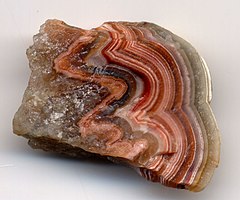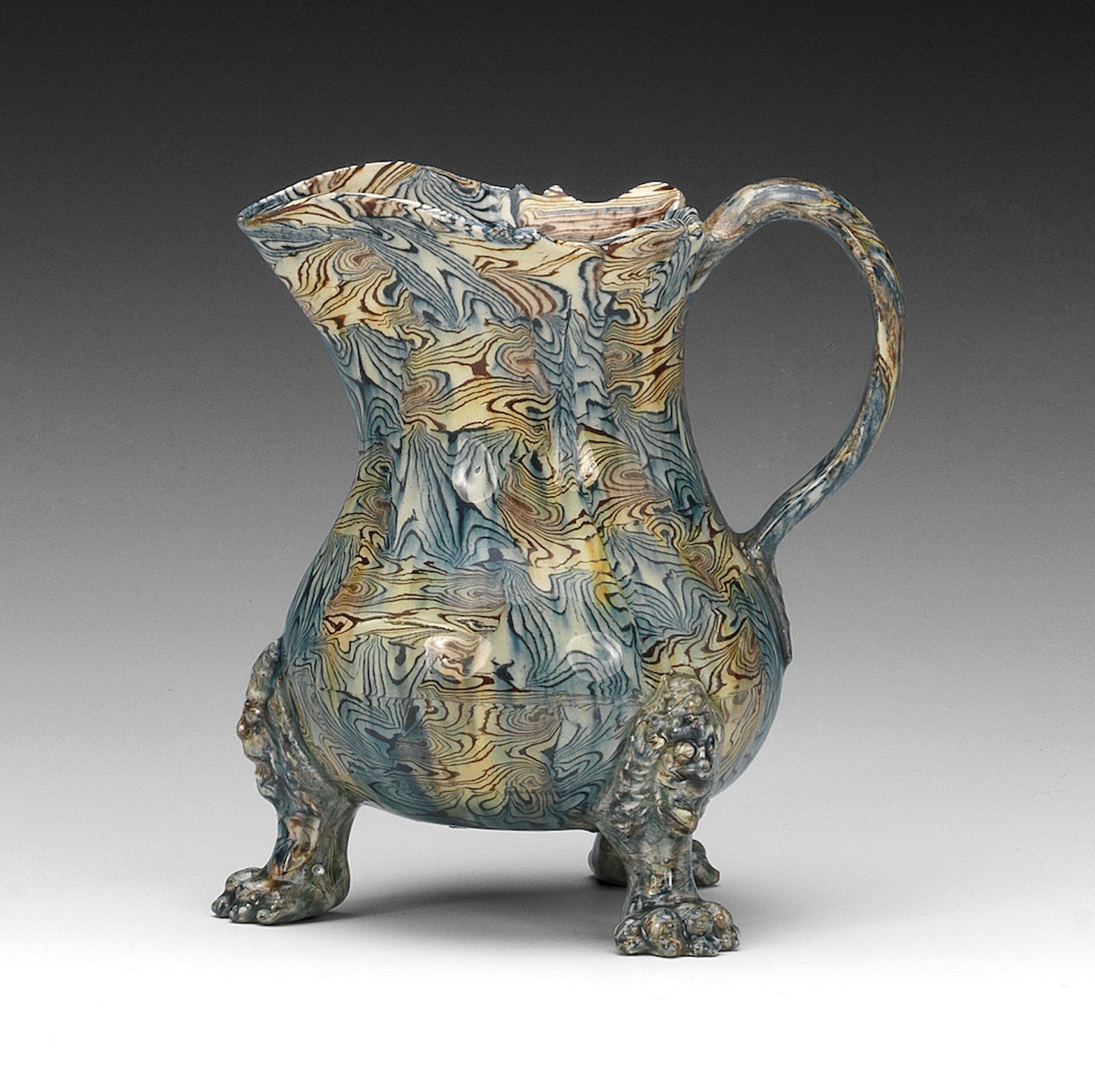I love these pieces and have found only two in what is now almost a year of mudlarking. When I picked up the first large shard, I presumed it was from the 1950s. Searched long and hard to identify their clan, finally getting there in the last few weeks. Less surprised that these finds are really old, in this case 250+ years, than I used to be.
 |
| Thames Mudlarking Find: Solid Agateware shard. |
 |
| Banded Agate (Wiki) |
 |
| Cross Section of Agateware showing the lines of colour throughout |
 |
| Mudlarking Find: Solid Agateware |
 |
| Thomas Whieldon 1719-95 (Whieldon Genealogy) |
 |
| Agate ware coffee mug 1750 (Martyn Edgell antiques) |
 |
| Solid Agateware Teapot 1740 - 50 (Victoria and Albert Museum) |
 |
| Agateware jug 1755- 60 (V&A) |

I love that stuff - I have only ever had one piece of it - and I found the origins in the V&A. Mine is exactly the same colours as yours, so it might have come from the same pot!
ReplyDeletehttp://moonflygirl.blogspot.co.uk/2011/08/box-of-treasures-and-some-green-faces.html